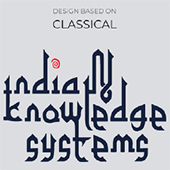Various experts in the field of Indian Knowledge Systems were contacted for feedback, especially on the course structure and the exposure content, as are listed below:
1. The panel of Design Thinking Curriculum, consisting of Prof. Amit Ray, Prof. Prajakta Kulkarni, Prof. Rupa Agarwal and Prof. Rupa Chakravarty.
2. Prof. Prasad Bokil, IDC, IIT Bombay: His work includes study and research on visual communication and semiotics.
3. Prof. Dimple Bahl, Associate Professor of Design at the National Institute of Fashion Technology, Delhi: Her work includes research and exhibitions that seek to take inspiration from ancient grid systems of Indian arts and architecture, and how they can be applied contemporarily.
4. A panel of experts working on an interactive program to teach the role of grids in Indian history. The presentation was incredibly helpful in exposing me to many types of grids that are used in a variety of fields such as architecture, rangolis, textiles and manuscripts.

Figure 40: Levels of parametrisation

Figure 41: Class XII students exploring the 3D-printed model

Figure 42: Designing joints in iteration 2
The reviews have been largely positive. Some of the key insights gathered are noted below:
1. Ancient knowledge could be classical or traditional; this project focuses on Classical, and that should be clearly mentioned
2. Classical knowledge doesn’t separate arts from design, thus a line needs to be drawn manually based on relevance of the subtopics in the contemporary scenario
3. Although a set design process can be inferred from the texts, artists had full freedom to experiment. Thus, nothing should be presented as being concrete/black-white.
4. Exposure content should be used as an umbrella to show examples and case studies- how something could be done.
5. Exercises could have more constraints to build more connections to Classical knowledge. Also, it is important to test these exercises on the go.
6. New reference material like Alice Boner and Ganpati Sthapati.

